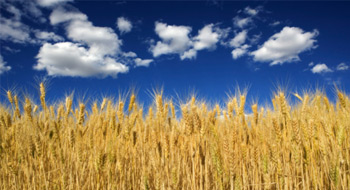

As traditional asset classes suffered in 2007 and 2008, agricultural commodity prices increased on the back of strong fundamentals. Indications suggest potential for further, long-term growth, despite strong returns from the asset class over the past few years.
Demand for agricultural commodities is increasing due to a number of factors. The global population is expected to reach 10.9 billion by 2050, according to 2010 World Bank estimates. Rising income per capita—especially in the emerging economies—and urbanization are resulting in greater consumption of food and shifts in dietary patterns in these countries. High quality available arable land is under pressure due to increasing urbanization, degradation of land and climate change.
Not surprisingly, investors are paying more attention to agriculture as an asset class. Investing in agricultural assets provides a number of benefits to investors, including diversification, an inflation hedge, and long-term stable returns.
Diversification benefits and inflation hedge—When held in a broader portfolio, farmland improves risk efficiency. Available data shows a positive correlation with the consumer price index (CPI) and low or negative correlation with traditional asset classes. In the United States, for example, between 1991 and 2008, the correlation between total returns from farmland and the CPI was above 0.9. In addition, U.S. Department of Agriculture figures suggest that during the high-inflation periods of 1944 to 1947 and 1975 to 1981, farmland returns exceeded U.S. CPI by 2% and 6.6%, respectively.
Resistance to economic shocks—Investments in farmland are resilient across economic cycles. Population-driven demand for grains remains the core base for agricultural commodities. People need to eat regardless of what is happening in the economy or financial markets. As such, the demand for basic foodstuffs is relatively inelastic to income, making demand for agricultural commodities less subject to an economic slowdown, as evidenced by the growth in consumption of key agricultural commodities through previous recessions.
Long-term stable income return—Agriculture has the potential to generate long-term stable income (cash yield of 4% to 6%) over the life of the fund, which can be as long as 20 years. A cash lease agreement is the lowest risk operating structure. While the lease structure varies region by region, the typical cash lease is structured on a one- to multi-year basis at a fixed dollar amount per tillable acre, payable by the tenant prior to the beginning of the crop year. In a cash-flex structure, a base cash rent is payable in advance and the investor shares in the upside of crop production based on commodity pricing and/or yields during the crop year.
Investors with a preference for current income tend to favour farmland over other real assets such as timberland for another reason—its comparatively higher cash flows. According to the NCREIF Farmland Index, the average time-weighted annual income return for farmland over the last 20 years (ending in the first quarter of 2013) was 7.10%. This was 2.7 percentage points higher than the 4.44% income return timberland generated during the same period.
In addition, farmland investment provides for an implicit investment in water, providing the opportunity for an additional return driver. Given the importance of water in agricultural production, agricultural exports are a method to transfer water from those countries with abundant resources to those with poor water resources. Farmland with sustainable water resources, including rain fed and irrigation, are expected to see enhanced valuations over time. The value of water assets attached to farmland may overtake the pure farmland value depending on the region.
There are different ways of accessing agricultural investments: agricultural futures, investment in equities or exchange-traded funds or via private capital funds. While agricultural futures and public equities offer routes to access the theme, the most direct and purest form of exposure to agriculture is achieved through the investment in farmland itself.
Private capital funds facilitate focused asset selection across different geographies, sub-sectors and businesses. They also provide access to experienced and high-quality farm management teams who can drive operational efficiencies. Funds enable exposure to movements in commodity prices, land values and improvements in productivity.
There are approximately 30 to 50 private equity funds targeting agriculture in part or as a focused strategy. Most of these fund managers have country- or region-focused agricultural strategy and invest across the whole value chain in agribusiness. This type of strategy tends to deliver high risk/return characteristics but takes on operational risk or other business risk.
Over the past few years, new entrants have targeted agricultural/farmland-focused funds. The funds launched by these managers and others tend to focus on one country/region and have high exposure to the operational side of the agricultural business (row crops such as corn, wheat and soybeans or permanent crops such as wine grapes, apples and almonds).
While agriculture may be an attractive asset class, it remains relatively new, with limited number of products available (though increasing each year). Potential investors need to spend some time understanding the opportunity set and which route to investment makes the most sense for them. As with other illiquid asset classes, manager selection is key.
Related articles:
